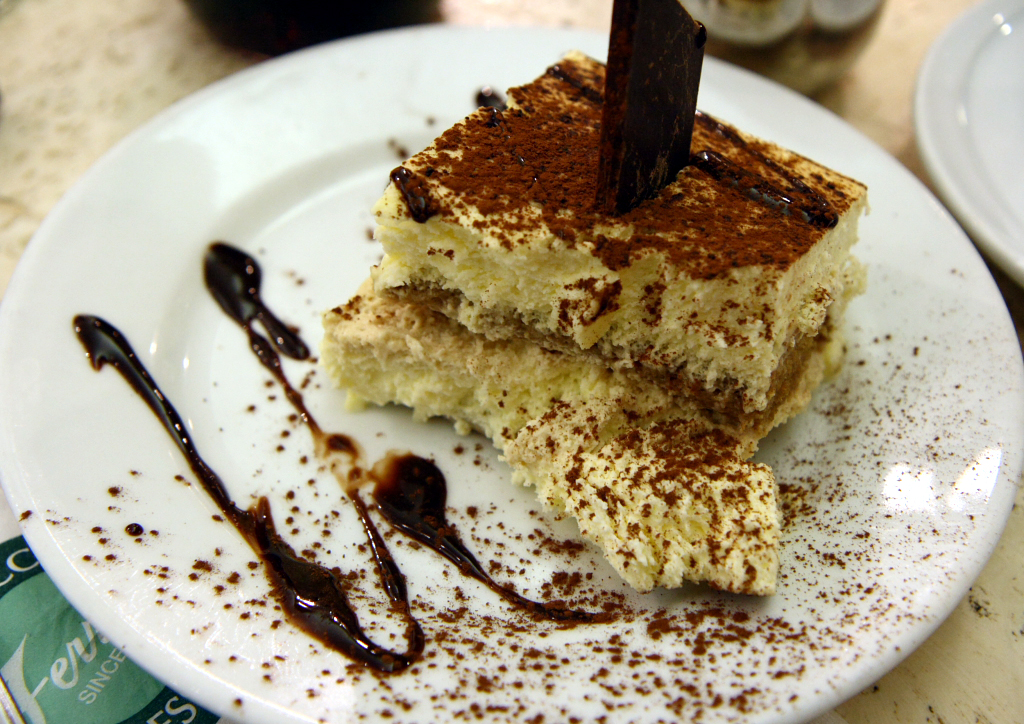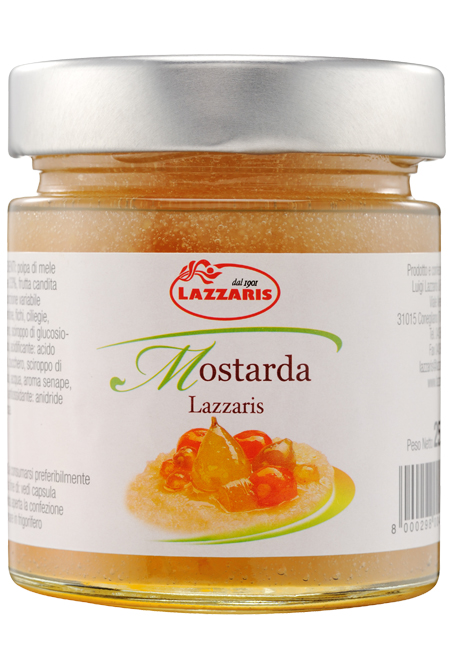


My family is not one that's big on desserts. For whatever reason, we never extended the Christmas traditions beyond pies, and I think birthday cake was as fancy as it got when I was younger. If you were *really* good, you got the German chocolate cake with real coconut in the frosting for your birthday. My mum made a fruitcake for my English grandfather every year, I just don't think we're a "sweet" driven kind of family - there was always more fruit in the house than anything else, and my mum would do wondrous things with vegetables, so I always wanted those first.
But that doesn't mean I don't appreciate a good dessert now and then. My husband's ice cream comes first to the list (especially the lemon/vanilla one he did a few years ago). After that, all the desserts I explored with him as we learned about my northern Italian heritage, so I hope you all don't mind indulging me in a roundup of the things I learned about Italian desserts during the holiday season.
When I started dating my husband, we started exploring the Twin Cities and found Cossetta's Restaurant in St. Paul, which became a highlight of some of my most cherished memories of that time period (and some very entertaining ones, too!). Cossetta's introduced me to tiramisu, the first wonderful and remarkably Italian dessert I had ever had, full of rich mascarpone cheese and crunchy ladyfingers. When we walked downstairs into the deli portion of the restaurant, along with the many different kinds of antipasti, pizza doughs, and pastas, we found a new product that I had never seen before, panettone. I bought a small one (I was on a high school's paycheck after all) and tried it at home with my dad. I was hooked! Light, softly flavored sweetness and bits of dried fruit for fun, the panettone was the best version of fruitcake I had ever tasted. When I discovered my celiac disease, well, I had to find a recipe for it that tasted just like I remembered that first time. Nichole from Gluten Free on A Shoestring really delivered (though I changed her fruits to more traditional ones).
As my husband and I continued to date, got engaged, and eventually married we found other forms of tiramisu that were just as good as Cossetta's, but in different ways. Buca di Beppo's version was delightfully boozy and over the top in flavor. Franchesca's was light and fluffy with a fabulous espresso flavor. I wasn't surprised when Treviso, the province of my grandfather's family in Italy, came out in 2013 and asked for tiramisu to get a Specialità tradizionale garantita status, giving it a heritage dating back to 1970s there. Even in the comments, the ingredients are debated and changed, depending on the family recipe that they were using. So when Udi's Gluten Free winner Bonita came out with a recipe, I didn't hesitate to try it even though it would be different than all of the other tiramisus I remember. Rich and meringue-y, it tastes different than any other version I've had. With my husband no longer drinking, the recipes will morph yet again as we change to a booze-free version of tiramisu. In all honesty, most of the time the booze was not necessary for the dessert - Buca's is really the only one that has done it well. I prefer to think about it as going back to the heritage of the dish, as the story says tiramisu is an after dinner pick-me-up that was invented to help prostitutes get back to work after long Italian meals.

But when we actually went to Italy for our honeymoon, my world was opened to a whole new set of ideas of what my beloved Italian ancestors would have in their Christmas celebrations. Fresh torrone from the candymaker's stall at the market, stiff and chewy, full of nuts and fruit and all the things that nougat makes better :-) Naturally gluten free, it was one of the first desserts I turned to in order to remember the sweetness of the holiday. Martha Stewart's recipe is pretty decent if you want to try making some of your own, or get some from Cost Plus World Market fresh. It hardens too much if you let it sit too long and then you're liable to crack a tooth on it.

Pandoro was next (the name STILL irritates me as the spelling and grammarian in me wants it to be properly "pan d'oro").Warm, sweet, and bread like, the best part of it in Venice was that they cut squares of it to serve with rich vanilla gelato and sprinkled with spicy cinnamon to create a wonderful sweet and spicy dessert. Pandoro being from Verona I was surprised to see it served there, but true to Venetian style, there was a multitude of desserts from many Italian provinces available. Schar's bread mix makes a wonderful base for this for the gluten free crowd, and their recipe is quite easy to make, Of course, you can't stay mad for long in Venice, because they're already feeding you the next amazing thing. The next item on my dessert list is a uniquely silly and Venetian thing, because only they would think to do something like make a rich creme dessert even richer. I've not found this recipe in the gluten free world yet (though when I have some free time it might be one I develop), but its good for non-gf crowds. Crema fritta all Veneta or Crema fritta alla Venezia. Fried cream. Yep - that's right! Thick curdled cream inside a delightful puff of fried dough and breadcrumbs that you serve with little bowls of more cold cream sweetened with sugar. A ridiculously simple recipe to follow (yes, it is in Italian but its easy to translate) that I'm thinking could be done using King Arthur's gluten free baking flour and any number of breadcrumbs (maybe the Schar variety?).

With a little searching in Venice, however, we found the REALLY cool desserts. Pinza Veneta or Pinsa Veneto (depending on who you ask), is traditionally made for the lighting of the Christmas Bonfires around the Venetian province of Veneto, including Vittorio Veneto, where my grandfather's family was from. While not one of the larger fires in the province (the one above is a beautiful one from Arcade, a little over a half hour from Vittorio Veneto), there is still a small one with plenty of pinza and brule (a hot, spicy mulled wine). The panevin, as the fires are known, started out as a pagan tradition on the winter solstice and then later became known as a way to help the three wise men find their way on a cold winter's night to Bethlehem. Grandma Bruna's recipe for pinza is delightful (note: not MY grandma LOL), and Schar comes to my rescue again with a gluten free recipe for pinza (though I would add some cornmeal to it to make it more authentic to what I remember).
If you are eating la pinza on a plate instead of standing around the panevin, the BEST thing to have with it is a uniquely northern Italian condiment called mostarda. Mostarda comes in a jar that looks like this:

but its actually better if you make your own, because then it doesn't look like some off colored mustard. Mostarda is a combination of fruits and mustard essence, and its a sweet and spicy condiment that helps clean out the cupboards while making something tasty. This recipe from Food52 makes a lovely version that's simple and requires little work (though a lot of time is involved, most of it is in non-active tasks...). And its naturally gluten free, so of course you can use it on tons of stuff, not just pinza! Pureed up more, its good with a lot of meat dishes, it can be used in the place of cranberry sauce, and its excellent with cheese and crackers.
























